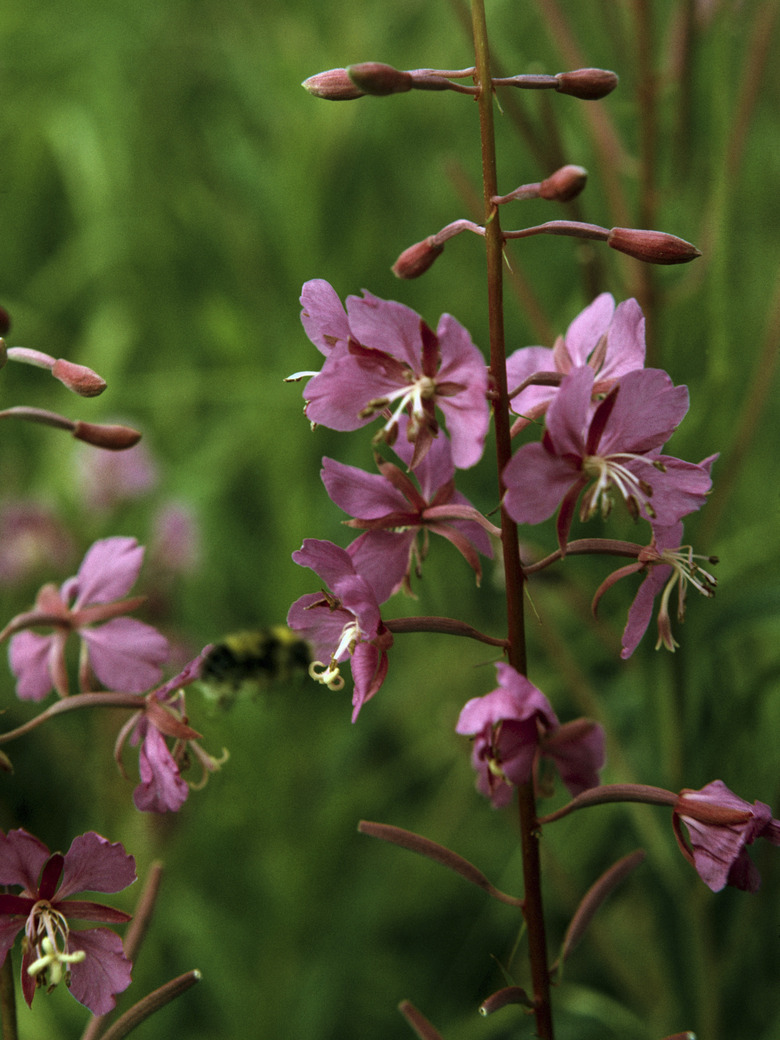When To Prune Gaura
No matter how pretty a plant's flower, if you can't see it, it doesn't do your garden any good. This is often the case with gaura (Gaura lindheimeri), a summer-blooming perennial suitable for U.S. Department of Agriculture plant hardiness zones 5 through 9, known for its tendency to flop over, hiding its flowers in the next plant over or on the ground. Proper pruning can help train the delicate-stemmed gaura to bloom at a lower height on stockier stems so you can better admire its flowers, and post-bloom cleanup keeps the plant looking good through fall.
Guara Culture
Step 1
Gaura is a North American native that blooms from early summer through fall when you give it the right conditions — full sun and soil that is moist, not too nutrient rich and that has excellent drainage. Sometimes called wand flowers, the plants produce a welter of delicate stems topped by dark red buds that open from the bottom up to reveal white, pink, or even yellow flowers, depending on cultivar. Gaura grows from a taproot to form loose clumps and can range from 18 inches to 3 feet tall. It is safe to plant gaura in areas where kids and pets play.
- No matter how pretty a plant's flower, if you can't see it, it doesn't do your garden any good.
- Sometimes called wand flowers, the plants produce a welter of delicate stems topped by dark red buds that open from the bottom up to reveal white, pink, or even yellow flowers, depending on cultivar.
Spring Pruning
Step 1
A little attention in spring can stave off any floppiness in your gaura plants when summer rolls around. Cutting back spring growth results in a shorter plant with thicker growth that stays fairly upright — the more you cut it back, the thicker it becomes. You can cut gaura back once by one-half when the plant is about 12 inches tall for a bushier plant with only about a one-week delay in blooming or cut it back to about two-thirds its unpruned height one more time in midsummer for blooms starting in late summer on a compact plant.
Deadheading
Step 1
Deadheading, cutting off faded flowers, encourages gaura to pump out even more flowering stems, extending its already long blooming period. Unlike some other perennials though, additional blooms don't form on side stems, so remove the entire stem at its base. Gaura blooms from the bottom of the stem up, so wait for the upper flowers to fade before making your cuts.
Considerations
Step 1
Gaura can be short-lived in cooler climates, where it doesn't reliably make it through the winter. Mulching helps, but you may want to leave some of the flowers stems in place to go to seed to ensure you'll have more plants next year. Once the flower petals drop, attractive red seed pods form on gaura. Simply clip back old stems in early spring if you leave them in place over winter and your plants survive. Volunteer seedlings usually pop up in the spring near the base of the parent plant. Always use clean, sharp tools when pruning any plant, and keep them out of reach of curious children.
- A little attention in spring can stave off any floppiness in your gaura plants when summer rolls around.
- Mulching helps, but you may want to leave some of the flowers stems in place to go to seed to ensure you'll have more plants next year.
References
- Chicago Botanic Garden: Gaura
- Pruning for Flowers and Fruit; Jane Varkulevicius
- Fine Gardening: Gaura Lindheimeri
- The Well-Tended Perennial Garden; Tracy DiSabato-Aust
- Hawaiian Ecosystems at Risk Project: Gaura Lindheimeri Risk Assessment
